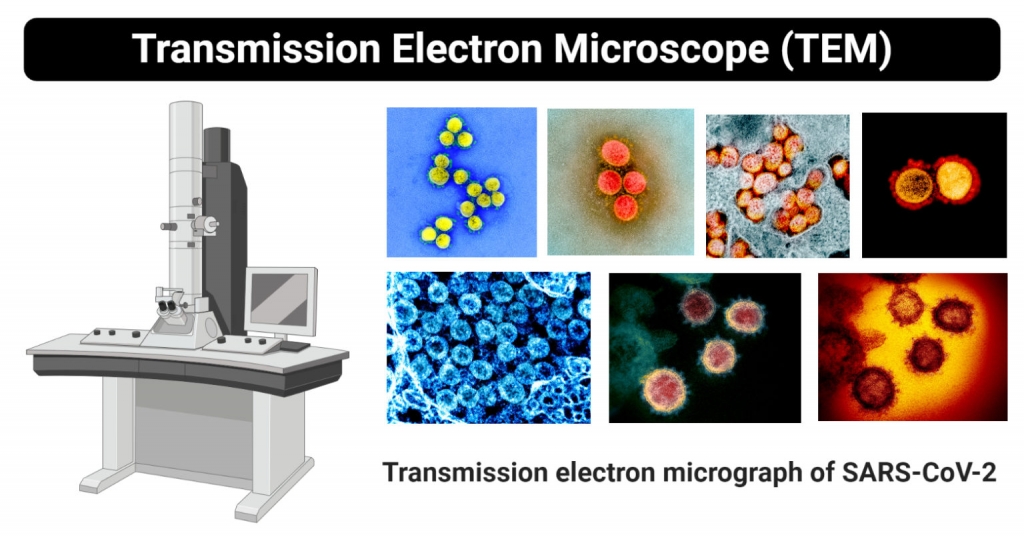المجهر الالكتروني النفاذ Transmission Electron Microscope

*
The working principle of the Transmission Electron Microscope (TEM) is similar to the light microscope.The major difference is that light microscopes use light rays to focus and produce an image while the TEM uses a beam of electrons to focus on the specimen, to produce an image.
Electrons have a shorter wavelength in comparison to light which has a long wavelength. The mechanism of a light microscope is that an increase in resolution power decreases the wavelength of the light, but in the TEM, when the electron illuminates the specimen, the resolution power increases increasing the wavelength of the electron transmission. The wavelength of the electrons is about 0.005nm which is 100,000X shorter than that of light, hence TEM has better resolution than that of the light microscope, of about 1000times.
This can accurately be stated that the TEM can be used to detail the internal structures of the smallest particles like a virion particle.
*
(Parts of Transmission Electron Microscope (TEM
Their working mechanism is enabled by the high-resolution power they produce which allows it to be used in a wide variety of fields. It has three working parts which include:
- Electron gun
- Image producing system
- Image recording system
*
How does a Transmission Electron Microscope (TEM) work
From the instrumentation described, the working mechanism is a sequential process of the parts of the TEM mentioned above. To mean:
- A heated tungsten filament in the electron gun produces electrons that get focus on the specimen by the condenser lenses.
- Magnetic lenses are used to focus the beam of electrons of the specimen. By the assistance offered by the column tube of the condenser lens into the vacuum creating a clear image, the vacuum allows electrons to produce a clear image without collision with any air molecules which may deflect them.
- On reaching the specimen, the specimen scatters the electrons focusing them on the magnetic lenses forming a large clear image, and if it passes through a fluorescent screen it forms a polychromatic image.
- The denser the specimen, the more the electrons are scattered forming a darker image because fewer electron reaches the screen for visualization while thinner, more transparent specimens appear brighter.
(Applications of Transmission Electron Microscope (TEM
TEM is used in a wide variety of fields From Biology, Microbiology, Nanotechnology, forensic studies, etc. Some of these applications include:
To visualize and study cell structures of bacteria, viruses, and fungi
To view bacteria flagella and plasmids
To view the shapes and sizes of microbial cell organelles
To study and differentiate between plant and animal cells.
Its also used in nanotechnology to study nanoparticles such as ZnO nanoparticles
It is used to detect and identify fractures, damaged microparticles which further enable repair mechanisms of the particles.
(Advantages of Transmission Electron Microscope (TEM
It has a very powerful magnification of about 2 million times that of the Light microscope.
It can be used for a variety of applications ranging from basic Biology to Nanotechnology, to education and industrial uses.
It can be used to acquire vast information on compounds and their structures.
It produces very efficient, high-quality images with high clarity.
It can produce permanent images.
It is easy to train and use the Transmission Electron Microscope
(Limitations of Transmission Electron Microscope (TEM
Generally, the TEMs are very expensive to purchase
They are very big to handle.
The preparation of specimens to be viewed under the TEM is very tedious.
The use of chemical fixations, dehydrators, and embedments can cause the dangers of artifacts.
They are laborious to maintain.
It requires a constant inflow of voltage to operate.
They are extremely sensitive to vibrations and electro-magnetic movements hence they are used in isolated areas, where they are not exposed.
It produces monochromatic images, unless they use a fluorescent screen at the end of visualization.
*








من فضلك قم بكتابة تعليق لتظهر لك روابط التحميل